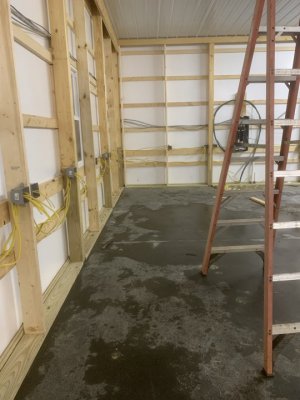- Joined
- Feb 25, 2021
- Messages
- 3,150
I agree with you on your logic.
I have a problem with too much heat, just takes it out of me. If it were me, I would install some attic fans to move that heat out between the ceiling and roof. I have a couple of friends that have installed those Big Ass Fans in their shop. Expensive but they move some air and are reversible for summer or winter. One has his in his hanger in Idaho and swears that the small heater with the fan keeps the temps very comfortable and during the heat of the summer very cool on its' own.
Another advantage to wall (attic) fans is if you do a lot of burning or welding, helps to move that smoke out. I have two stints in my heart so wife has flat out told me that I will mover that smoke out of the shop when we get ours or no burning or welding. Nice to have someone take care of you.
But I bet that ceiling will be a huge benefit in lighting.
Have to agree with the benefits of having someone take care of you. Those are the gems in our lives.
I’m planning on eventually putting in bridge cranes so that limits ceiling fan options. I will probably put a ceiling fan in the office, I’m enclosing a 12x12’ area that will house my 3x4 surface plate, a computer desk, electronics bench, and maybe a small fridge.
I intend to insulate the crap out of this building, 6” walls full and at least R-19 initially for the ceiling. The roof already has 1” styrofoam under the metal, and 1/2” under the exterior walls as a start. Shop needs to be comfortable to work in and economical to keep that way. I will likely put a dual head mini-split in the shop, 24000 btu for the main shop and 9000 for the office. The mini splits can be set to a dehumidify mode, which is really helpful with reducing rust. I find that I can tolerate about 80 degrees in the summer and about 55 in the winter (assuming shop safe clothing). Additionally the shop is getting a wood stove, as requested by my wife, she loves a fire. I buried a gas line out there and will probably put in a 50,000 btu gas heater next winter too.
It will be a while before all of those climate accessories get installed. Used up the last of some money rolled over from selling previous house in Atlanta to put in the sub grade and contract the construction. Dipped into the cash budget for this month to pay for the ceiling.
If I can get all of the wiring work done by end of March that will be good progress. Then April to move equipment in and close up the walls.


